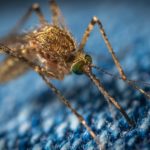 Scientists are currently attempting to simplify the process of studying the feeding patterns of mosquitoes. The bites of these insects can transmit illnesses such as malaria, dengue, and yellow fever, but performing experiments to analyze their behavior can be financially burdensome for laboratories.
Scientists are currently attempting to simplify the process of studying the feeding patterns of mosquitoes. The bites of these insects can transmit illnesses such as malaria, dengue, and yellow fever, but performing experiments to analyze their behavior can be financially burdensome for laboratories.
A recent study from Rice University explains that many experiments involving mosquito bites still require human volunteers, which is both expensive and risky.
Automating the process
The researchers have discovered a method to automate the collection and processing of mosquito-feeding behavior data using low-cost cameras and machine learning software. To avoid the requirement for live volunteers, they employed synthetic skin patches created with a 3D printer. Each patch of hydrogel, a gelatin-like substance, includes small passages that can be filled with flowing blood.
The team used bioprinting techniques to create substitutes for the skin. During feeding tests, up to six hydrogels can be placed in a transparent plastic container the size of a volleyball. The chambers are encircled with cameras pointing at each blood-filled hydrogel patch. Mosquitoes enter the chamber, and the cameras capture data on their landing frequency at each location, how long they linger, whether or not they bite, and how long they feed.
The scientists conducted proof-of-concept experiments to determine the efficacy of existing mosquito repellents made with DEET or a plant-based repellent produced from oil extracted from lemon eucalyptus plants. In the experiments, mosquitoes were found to feed on hydrogels without repellent but were deterred from hydrogel patches covered with either repellent. Although DEET was somewhat more effective, both tests showed that each repellent prevented mosquitoes from feeding.
The researchers think the findings suggest that the behavioral test system can be expanded to test or uncover new repellents and to explore mosquito behavior more extensively. They assert that the system may also enable testing in laboratories that were previously unable to afford it.
“It provides a consistent and controlled method of observation,” they explain. “The hope is researchers will be able to use that to identify ways to prevent the spread of disease in the future.”
The researchers are already utilizing their system to help them examine the vital transmission of dengue, and there are plans to further expand its use to the study of malaria parasites.
“We are using the system to examine virus transmission during blood feeding,” the researchers conclude. “We are interested both in how viruses get taken up by uninfected mosquitoes and how viruses get deposited, along with saliva, by infected mosquitoes.
“If we had a better understanding of the fine mechanics and proteins and other molecules that are involved, we might be able to develop some means of interfering in those processes.”